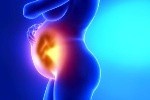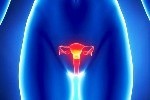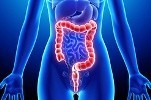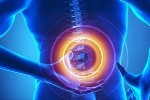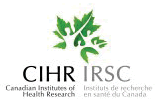Tests for infertility
When a couple has been unsuccessful at achieving pregnancy after one year, both partners need to go through a comprehensive physical and medical assessment. Tests for female infertility and a semen analysis should start immediately. Because male factors account for approximately 31.5% of all infertility cases, it is important to examine both partners for possible infertility issues.
Female tests
The first step in diagnosing an issue relating to fertility is a comprehensive appointment with your fertility physician. During this appointment, your medical history and lifestyle will be discussed extensively. Topics such as birth control use, menstrual and pregnancy history, current and past sexual practices, medications used, surgical history, other health issues and what your lifestyle is like as well as your work/living environment will all be discussed.
A thorough physical exam will also be done. Areas such as your thyroid, breasts, and hair growth will be looked at. A pelvic exam is also an important part of evaluating fertility, along with a pap smear.
After this first appointment, your physician may want to proceed with some initial testing. This initial testing will evaluate things such as if ovulation is occurring, when it should be occurring, ovarian function, and uterine function during the ovulation process.
Ideally, you will have already begun tracking your ovulation through uterine monitor, fertility awareness or a fertility monitor.
This will provide your reproductive specialists with valuable information about your ovulation. Usually one of the first questions regarding female fertility is whether you are ovulating or not.
Ovulation evaluation may be broken down into types:
- Ovulation testing - to confirm if ovulation is occurring by looking through your temperature charts, using ovulation predictor kits and blood tests and ultrasound.
- Ovarian function tests - These tests are looking to see how the hormones are functioning and working during your ovulation cycle. Tests include the Day 3 FSH (measuring follicle stimulating hormone), Day 3 Estradiol (measuring estrogen), ultrasound (to confirm ovulation occurred) Day 10-16, and blood tests to determine the levels of inhibin B and Luteinizing Hormone.
- Luteal Phase testing - Testing will evaluate progesterone levels, more extensive hormone testing, and possibly a endometrial biopsy ( see below for more info on this procedure.)
- Hormone tests - Most all of this testing will revolve around through hormone tests. These hormone tests include the following:
- Luteinizing Hormone
- Follicle Stimulating Hormone
- Estradiol
- Progesterone
- Prolactin
- Free T3
- Total Testosterone
- Free Testosterone
- DHEAS
- Androstenedione
The following tests are also commonly used in the first evaluated cycle:
- Cervical mucus tests: This involves a post coital test (PCT) which determines if the sperm is able to penetrate and survive in the cervical mucus. It also involves a bacterial screening.
- Ultrasound tests: This is used to assess the thickness of the lining of the uterus (endometrium), to monitor follicle development and to check the condition of the uterus and ovaries. An ultrasound may be conducted two to three days later to confirm that an egg has been released.
If both the semen analysis and the above testing return normal results, there is also additional testing that your fertility specialists may recommend. These tests include any of the following:
- Hysterosalpingogram (HSG): This is an x-ray of your uterus and fallopian tubes. A dye is injected through the cervix into the uterus and fallopian tubes. The dye enables the radiologist to see if there is blockage or some other problem.
- Hysteroscopy: This is a procedure that may be used if the HSG indicates the possible presence of abnormalities. The hysteroscope is inserted through the cervix into the uterus, which allows your fertility specialist to see any abnormalities, growths, or scarring in the uterus. The hysteroscope allows the physician to take pictures which can be used for future reference.
-
Laparoscopy: This is a procedure done under general anesthesia, that involves the use of a narrow fiber optic telescope under. The laparoscope is inserted into a woman’s abdomen to provide a view of the uterus, fallopian tubes, and ovaries. If any abnormalities such as endometriosis, scar tissue or other adhesions are found, they can be removed by a laser. It is important to confirm that you are not pregnant before this test is performed.
- Endometrial biopsy: This is a procedure that involves scraping a small amount of tissue from the endometrium just prior to menstruation. This procedure is performed to determine if the lining is thick enough for a fertilized egg to implant in and grow. It is important to confirm that you are not pregnant before this test is performed.
Contact Us
Chalmers Medical Building
328 Hwy 7 East Suite 201,
Richmond Hill ON L4B 3P7
Tel: 416 399-3888
E-mail: info@aahclinic.com
Conditions Treated
Effective Herbal Therapy for Inflammatory Bowel Disease
NO Surgery!
Carolyn XU Treats Ulcer Colitis Successfully
Considering Therapy?
Resource Links
References
Donation
Great things happen when you put your heart into it.
Click Here to Send us your request
Tips
Questions about your first appointment or if your insurance will cover the cost? Find more information below.


